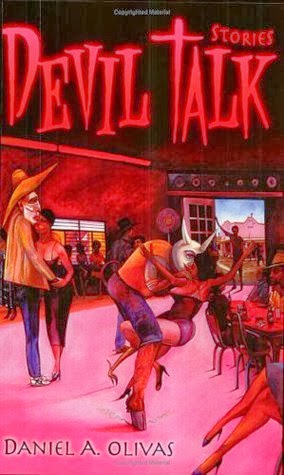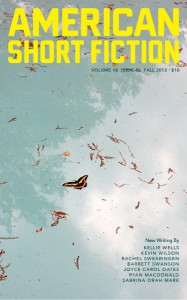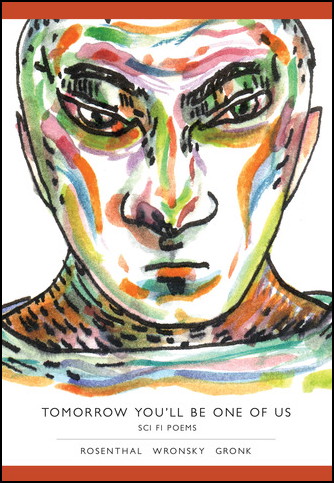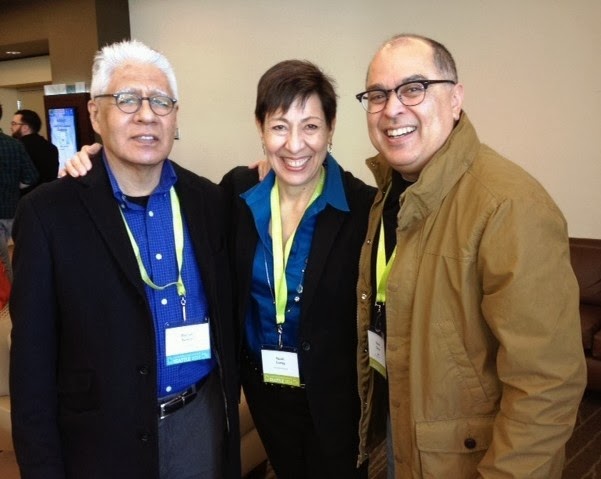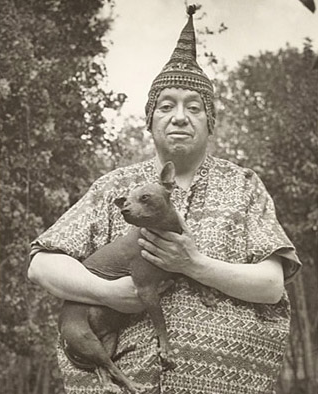Scholars Reaffirm FridaMichael Sedano
The reading from the 2013 anthology
Remembering Frida featuring editor Roberta Orona-Cordova, contributors Lara Medina, Maria Elena Fernandez, Sybil Venegas, Antonia Garcia-Orozco, and Marisa Garcia Rodriguez, moves along steadfastly in La Plaza de la Cultura y Artes gift store. Seated at floor level with sunlight pouring in from a storefront window behind them, the scholars read from their chapters. One musician performs at the gathering on International Women's Day.
The pace is appropriate to prose, particularly the dry, lulling syntax of academia, so the audience is doubly delighted when Sybil Venegas semi-dryly propounds her theory that a Chicana from South-Central taught Frida her look. Venegas enjoys the irony that the wild popularity of cosas Frida Kahlo reflects not a discovery but a style come back home. It’s the conceptual highlight of an afternoon that at first seems conventional. It was fabulous.
![]() |
| Roberta Orona-Cordova. Cover foto licensed from Vogue Magazine. |
Orona-Cordova frames the anthology as a personal manda honoring the professor’s mother, who, like Kahlo, lived in physical pain and marriage to a mujeriego. After the reading, Orona-Cordova distributes a copy of her text, a useful tactic academics might elect when reading in a popular setting.
The Editor's introduction challenges gente to think critically about the Kahlo ethos and iconography. Fans soured on Frida Kahlo owing to commercialization and image saturation, a painful injury in a still-evolving raza aesthetic. Orona reminds that during the movimiento Chicanas struggled to discover powerful mujer images to celebrate, to bestow widespread recognition and acceptance of a distinctive ethos. Why reject Frida, now that her image and the whole FK thing is the cat’s meow? The idea of Frida retains its inherent power, gente need to re-think.
![]() |
| Lara Medina |
Lara Medina enlarges popular knowledge through historical research and criticism. Medina’s critic’s eye discerns issues of patriarchy, fashion, identity choice, and appropriateness in Kahlo’s style and its adoption by women over recent years. Medina points out that fashion, not indigeneity, motivates Kahlo’s favorite style, la Tehuana. Kahlo had little personal experience nor knowledge of the Tehuantepec region. It's a key point that reinforces the view that clothing speaks to identity choice in reaffirming an American culture in a pointed exclusion of Eurocentricity.
Medina observes how indigenous couture features soft, loose garments that hide a woman's body. The fashion lets color and style be the expression of her identity, the Look not her looks. It's an extension of the critic's focus upon women making strategic identity choices on their own terms.
![]() |
| Marisa Garcia Rodriguez |
Marisa Garcia Rodriguez travels from New Mexico to share the stage with her colleagues. Garcia studies media and reads today from her Master’s thesis, a section on the movie,
Frida. The critic finds the Frida of the movies one-dimensional. The portrayal of the artist as driven from outsiders, as needing validation by Diego Rivera and art critics, misserves the passionate artist by mischaracterizing Kahlo’s self-motivating creativity.
Orona-Cordova takes a moment to acknowledge Marisa’s position as a young scholar. The only non professor on the panel, Garcia Rodriguez represents an emerging generation of chicano studies scholars. Assessed on the basis of Garcia’s presentation—she summarizes and adapts to the situation superbly in a solidly argued analysis—the field will be in top hands. The next generation of C/S scholars will no longer remember the movimiento. Like Marisa, they'll develop their understanding and subject matter by reading the research, consuming and creating the arts, and sitting on panels with Veteranas like today's.
“Who knows who Miguel Covarrubias was?” Show of hands: zero. Sybil Venegas is indomitable. “Who knows Rosa Covarrubias?” No hands. “Who knows Frida Kahlo?” A few hands.
![]() |
| Sybil Venegas with foto of Rosa Covarrubias on Caramelo |
It’s a tough house that melts in Venegas’ hands when she holds up Sandra Cisneros’ novel
Caramelo. The face on the cover is not Cisneros, it’s Rosa Covarrubias, Venegas tells the mystified audience. Demystifying, Venegas explains Rosa Covarrubias grew up in South-Central Los Angeles before moving to Mexico City, where she marries Miguel.
A dancer and actor, Covarrubias favors indigenous clothing that make her a standout in the artistic world of Mexico City of the roaring twenties and thirties. Rosa may be the first primera clase woman to dress like her maid servants, but with sincerity. She’s the subject of a traje tipico
photographic suite by notable U.S. photographer, Edward Weston.
Young Frida, a woman in her twenties like the college women emulating the look today, marries Diego Rivera, artist and mujeriego, and moves into his social circle of bohemian artists and patrons. Forty-something Rosa Covarrubias, a social maven of the clika, who's been everywhere and done everything twice, befriends the blushing bride. The inexperienced woman looks up to this swashbuckling bohemian Veterana, maybe like a madrina, maybe like a favorite tia, maybe as the sine qua non of young Frida's aspirations.
I'll leave the speculation to Sybil Venegas. Venegas cannot connect with an historian’s accuracy her ratiocination that Frida picks up Covarrubias’ liberated actitud and fashion sense, but the argument has rich speculative ground to back it up.
Venegas presents the argument with a happy and understated Chicana nationalism, and the audience eagerly accepts the scholar’s position that Mexican American Rosa is a proto-Chicana. Thus, Venegas reasons, the style that birthed a Salma Hayek movie, an endless stream of artwork featuring Frida iconography, and a hagiography surrounding Kahlo’s beauty, is a Chicana Thing. No wonder it works. ¡Ajua!
![]() |
| Maria Elena Fernandez |
Leave them laughing is a useful strategy when a reading is running long. A final reader doesn’t want to be “more of the same." Maria Elena Fernandez’ piece,
FK Nopal en La Frente, is tailor-made for last position on a two-hour panel. It would be a good closer to the book, but it’s the third essay in the twelve chapter collection. Click
here for Table of Contents of the $65 book, $52 ebook.
Fernandez crafts a funny, manic monolog that begins as a woman in the midst of a Frida Kahlo breakdown, streams through a consciousness of news, myth, fashion style, feminism, winding its way into a solid mujerismo that reconciles itself to various status quos. The monolog parallels Orona-Cordova’s introductory reminder that this popularized image is what you wanted. Use it. Don’t let it be exoticized nor trivialized out of your control.
![]() |
| Antonia Garcia-Orozco |
Control is what one hears in a virtuoso musician’s fingers, especially when striking a superb instrument like Antonia Garcia-Orozco’s guitar. A musicologist, Garcia-Orozco’s rich mezzo articulates words and phrases with crystal precision, despite the hollow space that swallows her voice. She closes the reading playing and singing her composition for the anthology.
The LA Plaza space is not a presenter’s favorite spot. Only the first few rows get good views of readers. Folks beyond see bobbing heads accompanied by amplified voices. Yet, here is good/better/best news. The good news is the reading is an element of a new spoken word program in town,
Platicas at LA Plaza. Better, this one’s on the eastside, east of
Silver Lake even. Best, the crowd filling the space reflects the effective work of Ximena Martin, Curator of Public Programs, LA Plaza de Cultura y Artes. Institutions grow because they have capable people like Martin, who was eager to talk about her upcoming native ingredients
cooking talks.
The gift shop space isn’t going to grow a platform, so in future, folks need to get to the museum early enough for favorable seating. Photographers are going to live with that bright window, the gallery needs that light.
Presenters are going to want to stand up and project to the groundlings.
Remembering Frida readers worked collectively, one holds the microphone so her neighbor can read from her manuscript. Poets could work from memory, or Martin probably has a lavaliere mic; the sound cart is excellent. The absence of a lectern doesn't mean a reader shouldn't stand, and I hope there won't be one in future.
Academic presenters will want to remember it’s a public audience, not inured to the ritual of the academic conference. Relax, personalize, and keep it shorter.
A public reading of difficult prose in a gift shop should not exceed five pages to seven pages--think about two minutes a page. Listeners count pages so presenters benefit from a folder or notebook. Any reader will do well to remember a dictum for meeting planners: a person’s brain can absorb half what their nalgas can tolerate.
LA Plaza de Cultura y Artes. 501 North Main Street, Los Angeles, CA 90012 • 888 488-8083 • M,W & Th, 12–5 pm, Fri-Sun 12-6
pminfo@lapca.org
Remembering Frida. Roberta Orona-Cordova, Ed. Kendall-Hall, Dubuque IA, 2013.
ISBN: 978-1-4652-2911-3 print
ISBN: 978-1-4652-3573-2 ebook
On-line Floricanto For the Gente of Fukushima and All of UsIris De Anda, Sharon Elliott, Red Slider, Francisco X. Alarcón, Res JF Burman, Suzy Huerta, Odilia Galván Rodríguez
Curator's statement by Odilia Galván Rodríguez
~ A special feature floricanto to commemorate the third anniversary of the Tohoku earthquake, tsunami and subsequent aftermath at Fukushima Daiichi Nuclear Power Plant in Japan. ~
On March 11 2011, the Tohoku earthquake devastated northern Japan and less than an hour after it hit, tsunami waves crashed Japan’s coastline. The tsunami waves reached run-up heights, which is how far the wave surges inland above sea level, of up to 128 feet and traveled inland as far as 6 miles. The tsunami flooded an estimated area of approximately 217 square miles. The number of confirmed dead surpassed 18,000, with more people still reported as missing. In addition to other very serious damage, the tsunami caused a cooling system failure at the Fukushima Daiichi Nuclear Power Plant, which resulted in a level 7 nuclear meltdown and release of radioactive materials. About 300 tons of radioactive water continued to leak from the plant every day into the Pacific Ocean, affecting fish and other marine life.
In response to the devastation, in addition to calling for material support, assistance, and prayers, Poets Responding to SB 1070 asked the world community to join them in an offering to the people of Japan of condolences and hope, in the form of poems.
Poets Responding to SB 1070 moderator, Odilia Galván Rodríguez, took on the task of gathering people’s work and subsequently, on April 19, Michael Sedano collaborated in this tribute and produced a special edition of La Bloga. Like today's column, that La Bloga featured Frida Kahlo.
http://labloga.blogspot.com/2011/04/review-frida-kahlo-her-photos-on-line.htmlThree years later the nuclear crisis continues to threaten more lives. While we are told that the clean up at Fukushima Daiichi is ongoing and that we have nothing to worry about, with regard to the radioactive water that is spewing into the Pacific Ocean daily, everyday we hear of more people becoming ill and dying of cancer. We hear reports of dead birds falling from the sky, marine life perishing en masse, and know something is amiss even though we are told otherwise.
This year, to bring attention to the situation at Fukushima and other global environmental concerns affecting our earth,
Poets Responding to SB 1070 and
Love and Prayers for Fukushima, a Facebook page started by Odilia Galván Rodríguez, called for poems for a special remembrance of what happened three years ago in Japan and to honor all those who lost their lives, and for their families and friends.
We know that we are but a tiny part of this grand web of life, that we are all connected, and what has happened to Japan affects us all. Some of the poems included here are new and some from the original tribute. United in struggle ~
Wednesday Prayers for Fukushimaby Iris De AndaSomething is happening
Something is happening in our ocean
Something is happening to our pachamama
we must come together and do something about it
I ask that we gather our intentions
wherever you find yourself on Wednesdays
I ask that you pray for our water
that you pray for our earth mother
that you pray
this prayer can be a simple word
a closing of your eyes
a wish
a thought
a song
you can meditate
visualize
dance
shout
listen
she is asking for us to hold a space
a healing space
a whole space
a tranquil space
a space within
at night or early morning
I send her my prayers
in the middle of the day
I send her my prayers
as I breathe air & drink water
I send her my prayers
alone I create a little ripple
together we can create a wave of love
Wednesday Prayers for Fukushima
Wherever you may find yourself
When birds fall from the sky and the animals are dying, a new tribe of people shall come unto the Earth from many colors, classes, creeds, who by their actions and deeds shall make the Earth green again. They will be known as the Warriors of the Rainbow.Copyright © 2014 Iris De Anda
All Rights Reserved.
Doom Tearsby Sharon Elliottfor Fukushima and the rest of the planetdoom cries
dragon tears
molten lava
drips from eaves
wet with
sorrow
leather wings
beat against
brutal
loss
claws wipe
hot
red
drops
sprinkling fire
against the mountain top
wailing grows
louder than the
breaking sea
9 years
90 decades
900 centuries
of unremittent
suffering
under a
carnelian sky
green growing things
crouch
beneath dirt
baked by
shameless
arrogance
waiting
for a blue sky
that does not
show itself
hidden by smoke
and fire
indelible
illegible
burning down
that
which should be prayed for
Poem Copyright © 2014 Sharon Elliott.
All Rights Reserved.
Born and raised in Seattle, Sharon Elliott has written since childhood. Four years in the Peace Corps in Nicaragua and Ecuador laid the foundation for her activism. As an initiated Lukumi priest, she has learned about her ancestral Scottish history, reinforcing her belief that borders are created by men, enforcing them is simply wrong.
She has featured twice in poetry readings in the San Francisco Bay area: at Poetry Express, Berkeley, Ca. in 2012 and La Palabra Musical in Berkeley, CA in 2013.
She was awarded the
Best Poem of 2012, The Day of Little Comfort, Sharon Elliott, La Bloga Online Floricanto Best Poems of 2012, 11/2013,
http://labloga.blogspot.com/2013/01/best-poems-of-2012.html
She has a book:
Jaguar Unfinished, Sharon Elliott, Prickly Pear Publishing 2012, ISBN-13: 978-1-889568-03-4, ISBN-10: 1-889568-03-1 (26 pgs)
The Fearful Symmetryby Red Slider
They say it didn't happen that way,
that some died quick and others not at all.
They say it was all in the sway of "necessity,
"
Called down from the sea to wash away our sins,
yet even now burns brightly, beneath our skins.
They say it didn't happen that way.
It was worth the price, "necessity,"
They say. "The survivors heal in time.
Those that don't survive, quickly die.
Their silence said as much," they said,
"It was necessary to end the war,"
they didn't suffer.
Somewhere, deep in the skin of their ghosts,
hubris burned brightly, renewing the curse
of Prometheus, plucking our livers from
the ashes of Fukushima-Daiichi. Once again
they will say, "It didn't happen that way,
It is the price of success and necessity,"
burning brightly, beneath our skins.
They say, to end a war we must light up the day or,
to light a lamp, place a speck of sun upon a coastal ledge
where ashen ghosts are still at play among the ruins,
their shadows lengthened into rays of paper, fan and broom.
By fire or by sea are the sins of ignorance swept clean
they say, while a thousand folded paper cranes pass by
in lingering review, they spin eternities in hubris gray;
they calculate the half-life of a day burning brightly,
beneath our skins.
© 2012 red slider.
All rights reserved.
Urgent Nuclear Prayerby Francisco X. Alarcóndisarm these ticking
bombs called reactors, Mother Earth,
have mercy on us!
we foolish children
who recklessly play with fire
are getting all burned
Toci Tonantzin!
Citlacueye! Tlazateotl!
tla Tlatecuhtli!
© Francisco X. Alarcón
March 24, 2011
Urgente plegaria nuclearpor Francisco X. Alarcóndesarma las bombas
de reactores, Madre Tierra,
¡tennos piedad!
como niños tontos
jugamos con el fuego,
hasta quemar todo
Toci Tonantzin!
Citlacueye! Tlazateotl!
tla Tlatecuhtli!
© Francisco X. Alarcón
24 de marzo de 2011
Francisco X. Alarcón, award winning Chicano poet and educator, born in Los Angeles, in 1954, is the author of twelve volumes of poetry, including,
From the Other Side of Night: Selected and New Poems (University of Arizona Press 2002), and
Snake Poems: An Aztec Invocation (Chronicle Books 1992),
Sonetos a la locura y otras penas / Sonnets to Madness and Other Misfortunes (Creative Arts Book Company 2001),
De amor oscuro / Of Dark Love (Moving Parts Press 1991, and 2001).
His latest books are
Ce•Uno•One: Poems for the New Sun / Poemas para el Nuevo Sol (Swan Scythe Press 2010), and for children,
Animal Poems of the Iguazú/Animalario del Iguazú (Children’s Book Press 2008) which was selected as a
Notable Book for a Global Society by the International Reading Association, and as an
Américas Awards Commended Title by the Consortium of Latin American Studies Programs. His previous bilingual book titled
Poems to Dream Together/Poemas para soñar juntos (Lee & Low Books 2005) was awarded the 2006
Jane Addams Honor Book Award. He teaches at the University of California, Davis, where he directs the Spanish for Native Speakers Program. The issue of eco-poetics and xenophobia are a the core of three upcoming collections of poems,
Poetry of Resistance: A Multicultural Anthology in Response to SB 1070,
Borderless Butterflies: Earth Haikus and Other Poems / Mariposas sin fronteras: Haikus terrenales y otros poemas. He is the creator of the Facebook page
POETS RESPONDING TO SB 1070 where more than 3,000 poems by poets all over the world have been posted.
Japanese Earthquake Haikuby Res JF BurmanI first heard of the Earthquake whilst listening to a Music Programme from Vancouver. A frequent listener posted from Tokyo that she could feel earthquake tremors. The following collection of haiku (isn) verses followed from that.I hear from Vancouver
Of Tokyo quakes... small world
In peril
Sitting safe at home
My heart goes out to all at risk
In quaking Tokyo
Man is so small
When the Dragon shrugs it's shoulders
Playthings of the gods
Japan lies bleeding
Scattered across her farm land
My heart bleeds for her
Ships take to the land
And cars take to the water
Racing to destruction
After the quake… the waves
So many lives turned upside down
Reduced to mud and matchsticks
Our thoughts and prayers
Are with you all in Japan
Living in harms way
Every child I see
Rescued... saved from the wreckage
My heart swells.... tearful joy
I see the loving care
As a boat load of children
Are passed hand to hand
Save them all.. Dear God..
Or Goddess.. save all of them
They need your mercy now
How strange to fear the rain
Or the gentle breeze blowing
From Fukushima
Snow falls on the scene
Of Japan’s great disaster
Gently… like a kind touch
Bestowed too late
Shunbun no Hi
A day for admiration
Of nature… cruel jest
But despite it all
In a Tokyo park today
Cherry Blossom hope
Copyright © Res JFB 11th March 2011
All Rights Reserved
Old Soldier, disabled Vet, War Pensioner, reformed, well mostly!
Ex-traveller, builder, carpenter, cabinet-maker, wood-turner, forester & silviculturist, herdsman and cow-lifter! Ex-donkey driver too! Lots of ex’s due mostly to age and disability but a bit of all of them still leaving their mark!
Now a long time practicing Taoist. (I’ll get it right some day!)
Into music, poetry, Oriental art, religion and philosophy. Photography. Beauty in all it’s forms; landscapes, seascapes, forests & mountains. And, of course, beautiful people, especially the ladies!
I am not a good walker nowadays but I still love wild places & the wild side. Love trees, bamboos, beautiful women and all with beautiful souls, animals and old dogs and children and watermelon wine!
After Shock~by Suzy HuertaTonight, prayers the people of Fukushima
will escape the unnatural breath
of radiation. Four burning reactors and acid
rains hang overhead. Together, we walk this coastline
of nuclear meltdown. The living cry for having outlived
tsunami explosions, and I decide I won’t cry death
that can, at the whim of wind and
ocean currents, take over, seep slowly
into expectant lungs and belly. Before the final seizure,
cancer born of hyper-energy and fabricated sun, I declare
my right to battle. 50 plant technicians stay behind
when levels spike into dangerous territory, more dangerous
than centuries of plate tectonic tension, and surging waters.
Like them, I focus on the fixing. I will not spend energy
this night at my desk, eyes on screens, on newsreels
of broken spirits: mothers to new babies,
70 year old husbands who couldn’t hold on
to waterlogged, drifting wives. I take their gaping wounds
like a bullet in protest, demand something better
and walk with their torment like a lover, saying goodbye
in this balmy, California sunset. Loose steps glide on
downtown, potholed pavement. Returning home, I discover
purple and yellow bulbs, ripe and blasting brilliantly,
growing spring into dying, winter skies.
Copyright © Suzy Huerta
All Rights Reserved
Suzy Huerta was born and raised in San Jose, California.
She currently teaches English composition and literature at Foothill Community College where she also coordinates the Puente Program.
Suzy Huerta's poems have been published in
The Packinghouse Review, El Coraje, La Bloga and other journals.
✿
Five Senryū~ an offering to Oceanby Odilia Galván Rodríguezon wings of ocean
water gives life or destroys ~
they were carried skyward
ocean endless
with no bottom to speak of
she cannot be blamed
for mysteries of life
painful as they are deep
clouds without answers
mighty ships sinking
as if gravity were no more
a chasm
earth-water fissures
a breach in reality
our safety lost
©Odilia Galván Rodríguez, 2011
![]()
Author Odilia Galván Rodríguez, is of Chicano-Lipan Apache ancestry, born in Galveston, Texas and raised on the south side of Chicago. As a social justice activist for many years, Ms. Galván Rodríguez worked as a community and labor organizer, for the United Farm Workers of America AFL-CIO and other community based organizations, and served on various city/county boards and commissions. She is the author of three books of poetry, of which Red Earth Calling ~ Cantos for the 21st Century ~ is her latest publication. Her creative writing has appeared in various literary journals and anthologies such as, The En'owkin Journal of First North American Peoples, New Chicana / Chicano Writing: 1& 2, Reinventing the Enemy's Language: Contemporary Native American Women's Writings of North America, Here is my kingdom: Hispanic-American literature and art for young people, Zyzzyva, The Beltway Poetry Quarterly, La Bloga as well as other online sites. She most recently worked as the English Edition Editor for Tricontinental Magazine, in Havana, Cuba under OSPAAAL, an NGO with consultative status to the United Nations. She is one of the facilitators of Poets Responding to SB1070, a Facebook page dedicated to calling attention to the unjust laws recently passed in Arizona which target Latinos, and Love and Prayers for Fukushima. She also teaches Empowering People Through Creative Writing Workshops nationally.
 The La Bloga list of book authors in speculative lit is in the process of updating. Here's the latest, with more to come. We've gotten suggestions from many people and groups, including members of the Carl Brandon Society, a group of black spec authors. Eventually, the influx of more published books in these genres will bring up a question, even possibly this year at latino lit conferences:
The La Bloga list of book authors in speculative lit is in the process of updating. Here's the latest, with more to come. We've gotten suggestions from many people and groups, including members of the Carl Brandon Society, a group of black spec authors. Eventually, the influx of more published books in these genres will bring up a question, even possibly this year at latino lit conferences: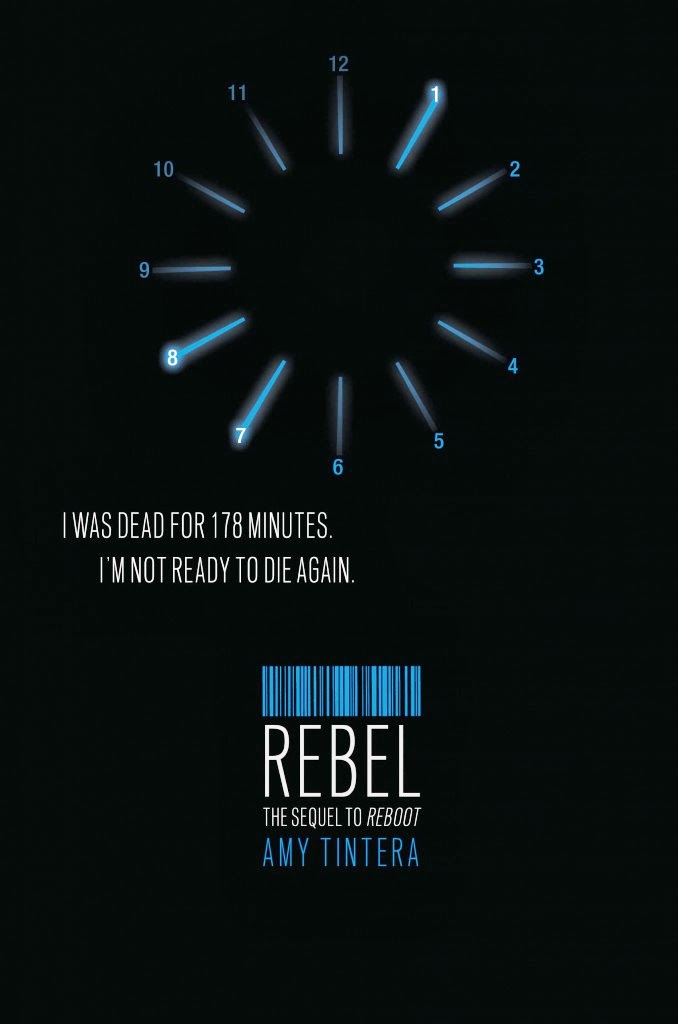 Latino spec authors as young as Amy Tintera and Matt de la Peña may not know, but viejos like Rudy Anaya and Armando Rendón haven't forgotten how the Chicano Movimiento developed. I won't go into it much, but it's worth studying. To remember the past so we're not condemned to repeat it, as Spanish-American George Santayana advised.
Latino spec authors as young as Amy Tintera and Matt de la Peña may not know, but viejos like Rudy Anaya and Armando Rendón haven't forgotten how the Chicano Movimiento developed. I won't go into it much, but it's worth studying. To remember the past so we're not condemned to repeat it, as Spanish-American George Santayana advised. Should Latinos join CBS? - Latino spec authors have joined the Carl Brandon Society. Its mission is "to increase racial and ethnic diversity in the production of and audience for speculative fiction."From what I could discern, their awards and recommendations for published books do not seem to include any latinos; their Hispanic Heritage reading list might only list one U.S. latino. All of which may reflect low latino membership, or that few latinos have been nominated. Despite this, latinos could/might still join CBS. As an author, I'm in contact with them. There may other groups worth investigating.
Should Latinos join CBS? - Latino spec authors have joined the Carl Brandon Society. Its mission is "to increase racial and ethnic diversity in the production of and audience for speculative fiction."From what I could discern, their awards and recommendations for published books do not seem to include any latinos; their Hispanic Heritage reading list might only list one U.S. latino. All of which may reflect low latino membership, or that few latinos have been nominated. Despite this, latinos could/might still join CBS. As an author, I'm in contact with them. There may other groups worth investigating. What is undetermined is the portrayal of women in latino spec. From Reyes Cardenas's book cover to Junot Díaz's macho characters, I guess this will long remain the most contentious and possibly divisive questions. On one side is verisimilitude, free speech and poetic license and men's genetic flaw of being attracted by--well, you know. On the other, is the desexualizing, demystifying and respecting women as people first; plus there's more. As you can read below, the decades-old SFWA hasn't solved this among its membership. For a latino sci-fi society to not die at its inception, un chigón/chingona of a path about equality would need to be laid.
What is undetermined is the portrayal of women in latino spec. From Reyes Cardenas's book cover to Junot Díaz's macho characters, I guess this will long remain the most contentious and possibly divisive questions. On one side is verisimilitude, free speech and poetic license and men's genetic flaw of being attracted by--well, you know. On the other, is the desexualizing, demystifying and respecting women as people first; plus there's more. As you can read below, the decades-old SFWA hasn't solved this among its membership. For a latino sci-fi society to not die at its inception, un chigón/chingona of a path about equality would need to be laid. In a sense, some of the raza youth were forced out, driven to seek guidance elsewhere--in the writings of Mao and Che, for instance. Eventually the young latinos mellowed, partly from the frustration of fewer successes and declining memberships.
In a sense, some of the raza youth were forced out, driven to seek guidance elsewhere--in the writings of Mao and Che, for instance. Eventually the young latinos mellowed, partly from the frustration of fewer successes and declining memberships. Expand it also into the public schools where our future Mario Acevedos and are dying to be discovered, guided, nurtured and applauded. Teachers go it alone every day in public schools, and any new lit society should buttress that work with its expertise. You would not believe how many teachers--latinos and otherwise--are crying to know how to teach fiction to little brown kids.
Expand it also into the public schools where our future Mario Acevedos and are dying to be discovered, guided, nurtured and applauded. Teachers go it alone every day in public schools, and any new lit society should buttress that work with its expertise. You would not believe how many teachers--latinos and otherwise--are crying to know how to teach fiction to little brown kids.

 From 350.og comes this; This pipeline can be stopped. One of the very last steps before President Obama makes his decision on the pipeline, and the final opportunity to give your input (in an official way). Numbers really count, and a flood of comments would show the President that there’s a huge risk, politically and scientifically, to approving the pipeline.
From 350.og comes this; This pipeline can be stopped. One of the very last steps before President Obama makes his decision on the pipeline, and the final opportunity to give your input (in an official way). Numbers really count, and a flood of comments would show the President that there’s a huge risk, politically and scientifically, to approving the pipeline. The last time the State Department was accepting comments, we submitted over 1 million as a movement. To top that, click here to submit your comment against the pipeline.
The last time the State Department was accepting comments, we submitted over 1 million as a movement. To top that, click here to submit your comment against the pipeline.




